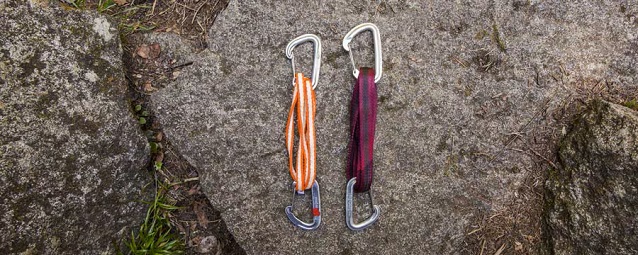Why Climbing Slings Are the Most Important Piece of Gear on Your Rack
When you commit to a climb, you’re placing total faith in your gear. It’s a high-stakes environment where every single component has to be trustworthy. You know that the harness and the big rope get all the glory, but often, the most crucial safety factor is one simple loop of webbing. You need to build bombproof anchors and skilfully manage the rope on long, wandering routes where friction is a nightmare.
That’s why these simple fabric loops are so absolutely vital. They give you the flexibility you need for complex rigging and the security you demand for anchors. That’s why you need to order climbing slings to complete your rack. They will immediately become the quiet heroes of your safety system.
Why You Should Purchase Climbing Slings: The Versatile Backbone of Safety
They Make Your Anchors Rock-Solid
You know that feeling when you’re hanging on a ledge and you need an anchor you can absolutely trust? A climbing sling is essential for making that happen. It allows you to connect multiple pieces of protection (like bolts or cams) together, making sure the force of a fall is shared equally between them. This process is called equalisation, and it’s the only way to make a truly bombproof anchor. They are the strong, simple link that turns several individual pieces into one reliable safety system.
They Slash Rope Drag on Long Routes
Nothing is more frustrating than when the rope zigzags across the rock, creating terrible friction that’s called rope drag! It makes every pull harder, wearing you out quickly. When you use a long sling to extend your quickdraws, you get the rope running straighter and away from the rock. This is a huge game-changer because it keeps your climb smooth and efficient. Slings eliminate the drag problem and let you focus your energy on the actual climbing, not on hauling the rope up behind you.
They Are the Ultimate Multi-Tool
Think of rock climbing slings as the super-versatile item that does literally everything else on your rack. You can use them for all sorts of tasks, like attaching yourself to a fixed point, creating a quick emergency safety harness, or even replacing a broken quickdraw. If you ever need to do a self-rescue or set up a hauling system, they are the key component for making friction hitches. They give you options and flexibility when you are high up and need to improvise a safe solution.
They Keep Your Gear from Falling Out
This is a critical safety benefit! When your protection (like a cam or a nut) is placed deep inside a crack, the movement of the rope can actually cause it to wiggle or “walk” its way out of the rock. If you use a long sling to extend the protection, it moves the rope away from the placement. This reduces the movement and keeps your expensive gear sitting securely in place. They greatly increase the chance your gear will hold firm if you take an unexpected fall.
Factors to Consider When Buying Rock Climbing Slings

Material
When you look at slings, you’ll mostly see two types of material: nylon and dyneema. This is a big choice because they feel and act differently on the rack. Nylon slings are the traditional option; they are thicker and slightly heavier, and they are generally a bit cheaper. They have more ‘stretch’ or elasticity, which can be a good thing. If you take a really massive fall, that slight stretch helps absorb some of the impact force, which is easier on the anchor and the rest of your gear.
However, the more modern slings are made from dyneema (sometimes called spectra). These are super lightweight and very thin, almost feeling like ribbon. If you’re heading out on a huge alpine climb or a long multi-pitch route where every gram counts, you should definitely choose dyneema to keep your weight down. This option also absorbs less water, which is great for ice or wet conditions. The trade-off is that it’s less stretchy, so it transfers more force in a fall. You should probably have a mix of both on your rack for different jobs.
Length
Choosing the right length is just as important as the material, and you definitely need a variety on your rack. The two most common sizes you’ll see are 60-centimetre and 120-centimetre. The 60-centimetre slings are short and perfect for basic, small tasks, like quickly extending a quickdraw slightly, or setting up a personal anchor at a belay. They are fast and easy to handle.
The 120-centimetre slings are the workhorse of your rack! They are essential for almost every rigging task. You use them primarily for building strong, equalised anchors at the top of a pitch, and they are also the best size for doing long extensions on wandering routes to prevent rope drag. They even sell longer ones, like 240-centimetre slings, which are great for wrapping around big natural features like trees or large rock horns. They are definitely bulkier, but you should not skip out on having enough of those 120-centimetre runners.



